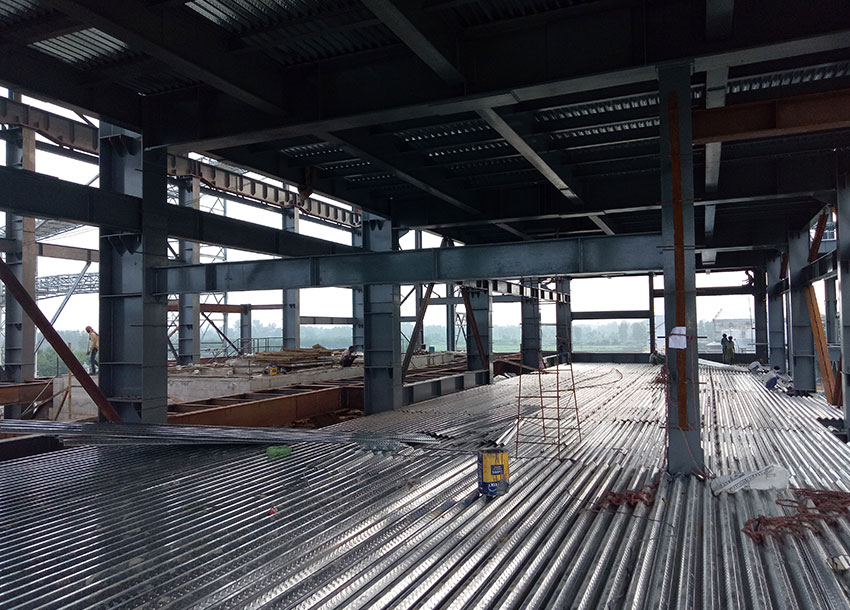Hybrid Constructions

The Perfect Blend of Steel and Concrete
Hybrid construction combines the strength of steel with the durability of concrete to deliver high-performance, cost-effective, and sustainable building solutions. By integrating steel frames with concrete cores or slabs, this method offers enhanced structural integrity, faster construction timelines, and greater design flexibility.
Why Choose Steel-Concrete Hybrid Construction?
- Structural Efficiency: Steel provides exceptional tensile strength, while concrete excels in compression—making them the ideal pair for robust and resilient structures.
- Speed and Precision: Pre-fabricated steel components reduce on-site labor and allow for quicker assembly, minimizing project timelines.
- Design Flexibility: Hybrid systems support larger spans and creative architectural layouts without compromising stability.
- Cost-Effective: The combination reduces material wastage and lowers long-term maintenance costs.
- Sustainability: Steel and concrete can both be recycled, contributing to greener construction practices.
Ideal for commercial buildings, bridges, high-rises, and industrial structures, hybrid construction is the future of modern infrastructure.
FAQs
Q1: What is the difference between hybrid construction and traditional construction?
Hybrid construction combines conventional methods (like concrete) with modern techniques (like steel framing and modular construction) for faster, stronger, and greener projects.
Q2: Are hybrid constructions eco-friendly?
Yes, they reduce material waste, support energy-efficient design, and use sustainable alternatives.
Q3: How cost-effective is hybrid construction?
Though the initial investment can be higher, long-term maintenance and energy savings make it more cost-efficient.
Q4: Can hybrid construction be used for high-rise buildings?
Absolutely. Hybrid methods offer structural strength and flexibility required for skyscrapers.
What Are Hybrid Constructions?
Hybrid construction is a modern approach that blends traditional building methods with innovative materials and smart technologies. By combining steel, concrete, wood, and modular design techniques, hybrid constructions deliver faster project completion, higher durability, and long-term cost efficiency.
Why Choose Hybrid Constructions?
- Strength + Flexibility – Combines structural steel’s strength with concrete’s durability.
- Speed of Execution – Prefabricated elements reduce construction timelines.
- Cost-Effective – Optimized resource use lowers waste and costs.
- Eco-Friendly – Supports green practices with energy-efficient materials.
- Future-Ready – Accommodates IoT, smart building systems, and sustainable upgrades.
Applications of Hybrid Constructions
- Residential Buildings – Modern apartments, villas, and housing societies.
- Commercial Projects – Offices, IT parks, and co-working spaces.
- Industrial Facilities – Warehouses, factories, and logistics hubs.
- Institutional Spaces – Hospitals, schools, and universities.
Metrosh Advantage in Hybrid Constructions
- End-to-End Expertise – From planning and design to execution.
- Innovative Materials – Use of high-performance steel, engineered wood, and precast concrete.
- Sustainability First – Energy-efficient, low-waste methods.
- Proven Track Record – Successfully delivered hybrid projects across India.


